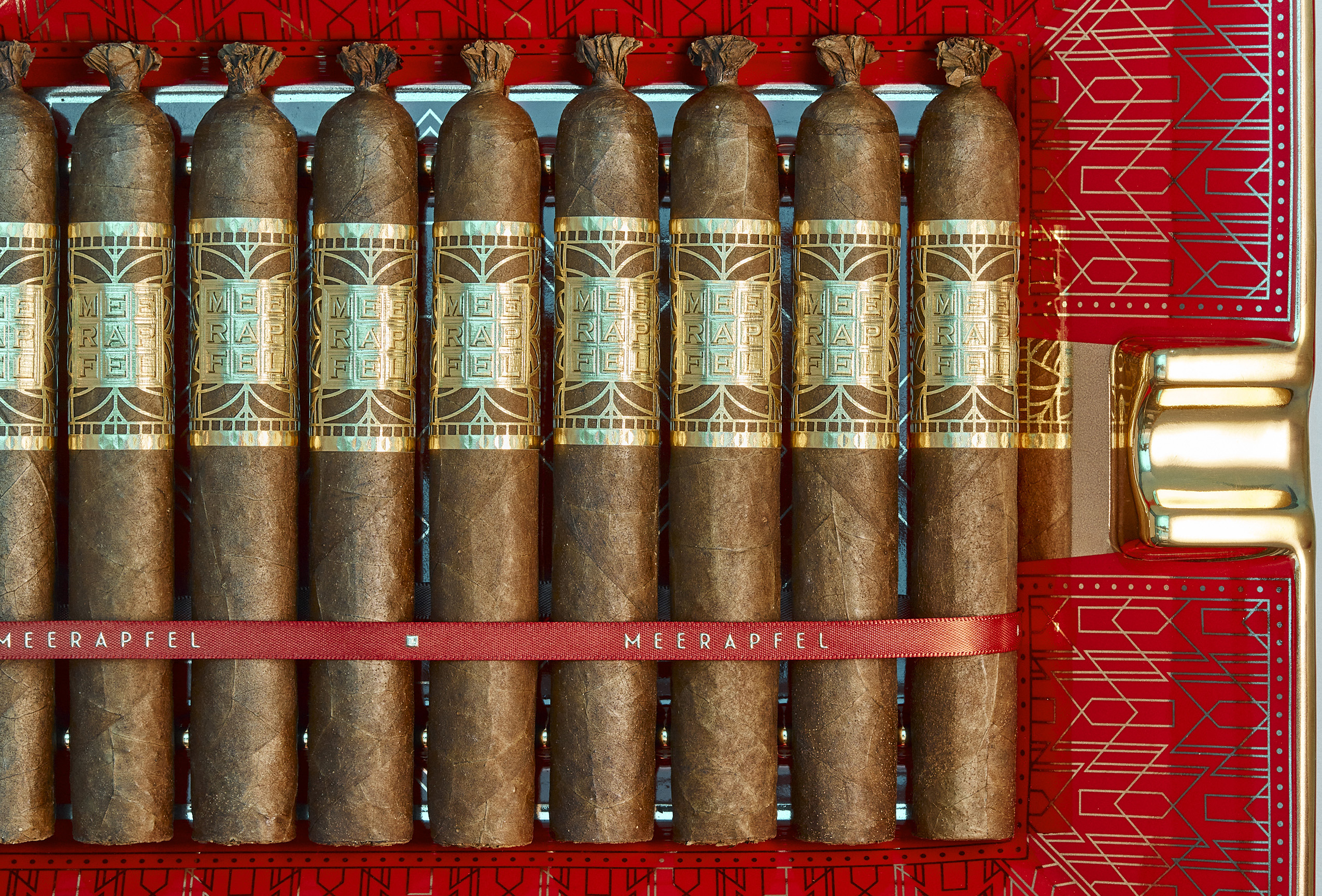Meerapfel Cigar, the Meerapfel family’s flagship cigar brand, has a fairly simple mandate when it comes to naming cigars: honor the people who have been instrumental in the family’s centuries of tobacco history.
The first line was named after the late Richard Meerapfel, the father of Jeremiah, Joshua and Melissa Meerapfel, the trio who lead the family’s tobacco companies today. The second line was named after Meir Meerapfel, who established the Meerapfel cigar factory in the village of Untergrombach, Germany, in 1876.
For its newest line, the family is honoring Ernest—the grandfather of Richard and the great-grandfather of the current generation—who left Untergrombach to explore tobaccos outside of Europe.
“My great grandfather Ernest’s exodus was the epitome of curiosity and bravery that our family members have always carried in their hearts; a lust for accessing the finest leaves nature has to offer, no matter how remote or challenging the adventure may be,” said Jeremiah Meerapfel, chairman of M. Meerapfel & Söhne Belgium S.A., in a press release when the new line was announced in September 2023. “The Meerapfel Ernest Master Blend is filled with aspirational sensations, layers of curiosity, and an awe-inspiring complexity, exemplifying the unique explorations of those who leave behind the assumed safety and comfort, to conquer only the finest – the intricacy of UberLuxury.”
The company hasn’t disclosed blend details about any of its cigars and that continues with the Ernest. It’s offered in four sizes.
Note: The following shows the various Meerapfel Cigar Ernest Master Blend vitolas. Some of these cigars may have been released after this post was originally published. The list was last updated on April 15, 2024.
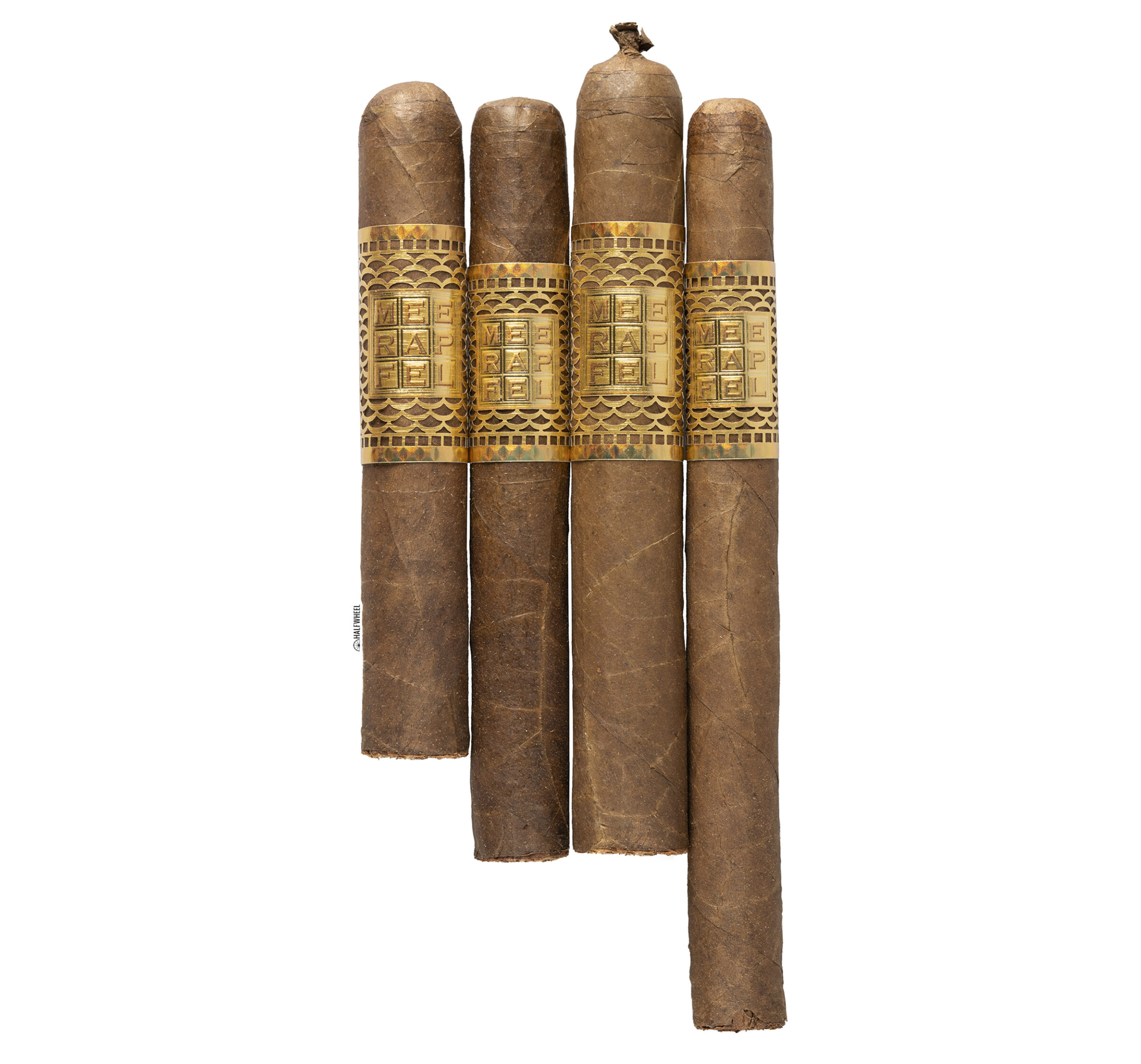
- Meerapfel Cigar Ernest Master Blend Double Robusto (5 3/4 x 52) — $94 / €101 (Box of 10, $940 / €1,010)
- Meerapfel Cigar Ernest Master Blend Corona Gorda (5 1/2 x 46) — $41 / €44 (Box of 25, $1,025 / €1,100)
- Meerapfel Cigar Ernest Master Blend Robusto (4 7/8 x 50) — $46 / €49 (Box of 25, $1,150 / €1,225)
- Meerapfel Cigar Ernest Master Blend Lonsdale (6 3/4 x 43) — $50 / €53 (Box of 25, $1,250 / €1,325)
89
Overall Score
The good news is that I think this cigar oftentimes tastes quite similar to—but not identical to—an Arturo Fuente Don Carlos. Even without smoking them side-by-side, there are some clear differences—I think the Don Carlos has more pepper, especially a more consistent pepper—but the highlights of the cigars are similar enough. Most of the Meerapfel-branded cigars that I’ve smoked up until this point have been better than the good Cameroon-wrapped cigars you can find in stores, but the Ernest Lonsdale is a more complicated story. One cigar was great, another was very good and the third—the one that had the stronger vegetal flavor—was slightly worse than what I’d expect from a good Cameroon-wrapped cigar like Don Carlos. There’s also no getting around how harsh the cigar finishes or the odd combustion issue near the midway point of each cigar. All of this combined means this fails to meet the insanely high bar that has been set by Meerapfel Cigar, though given how good the second cigar I smoked was, it’s possible that this cigar could meet that standard.
Production is limited to 613 boxes per vitola annually.

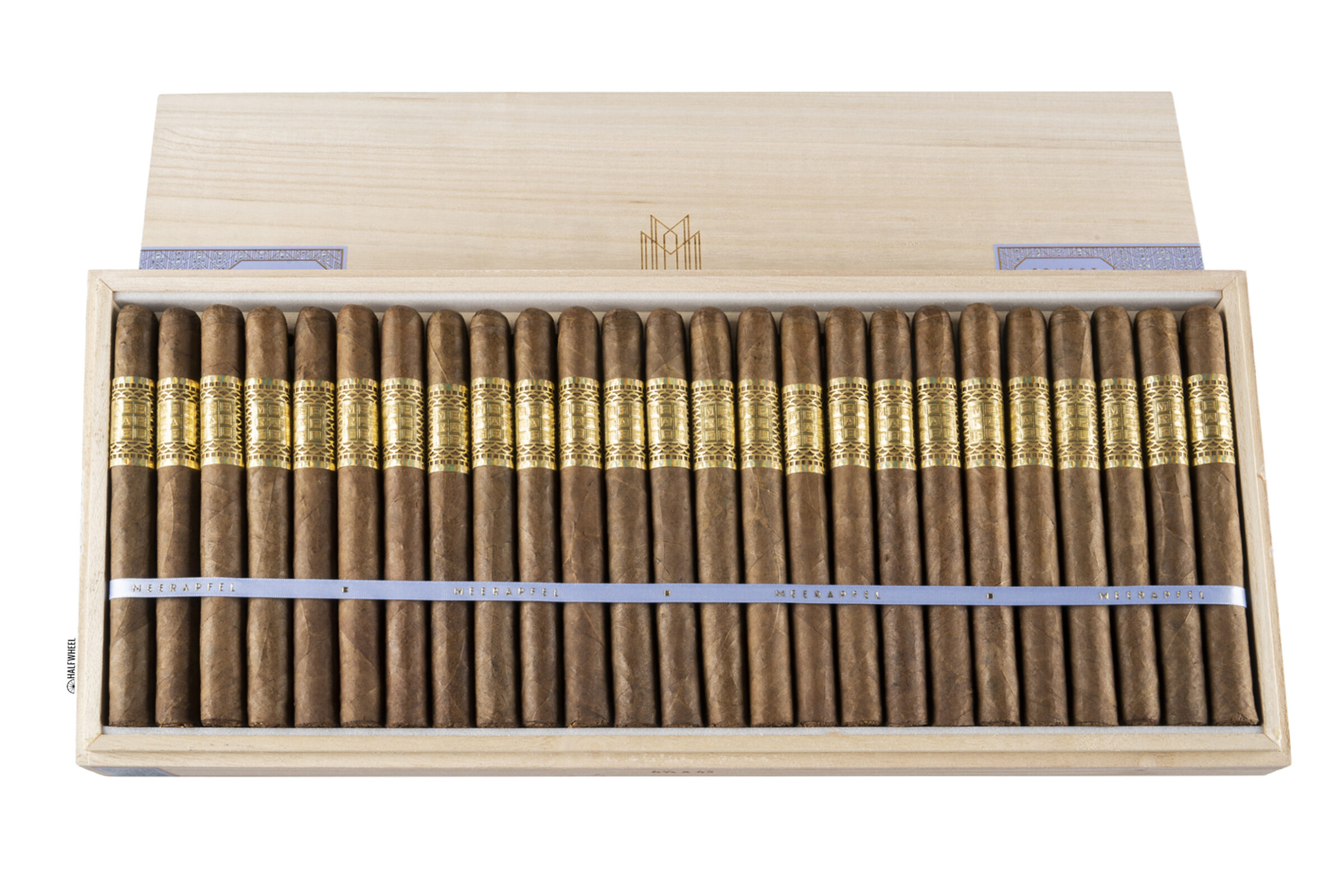
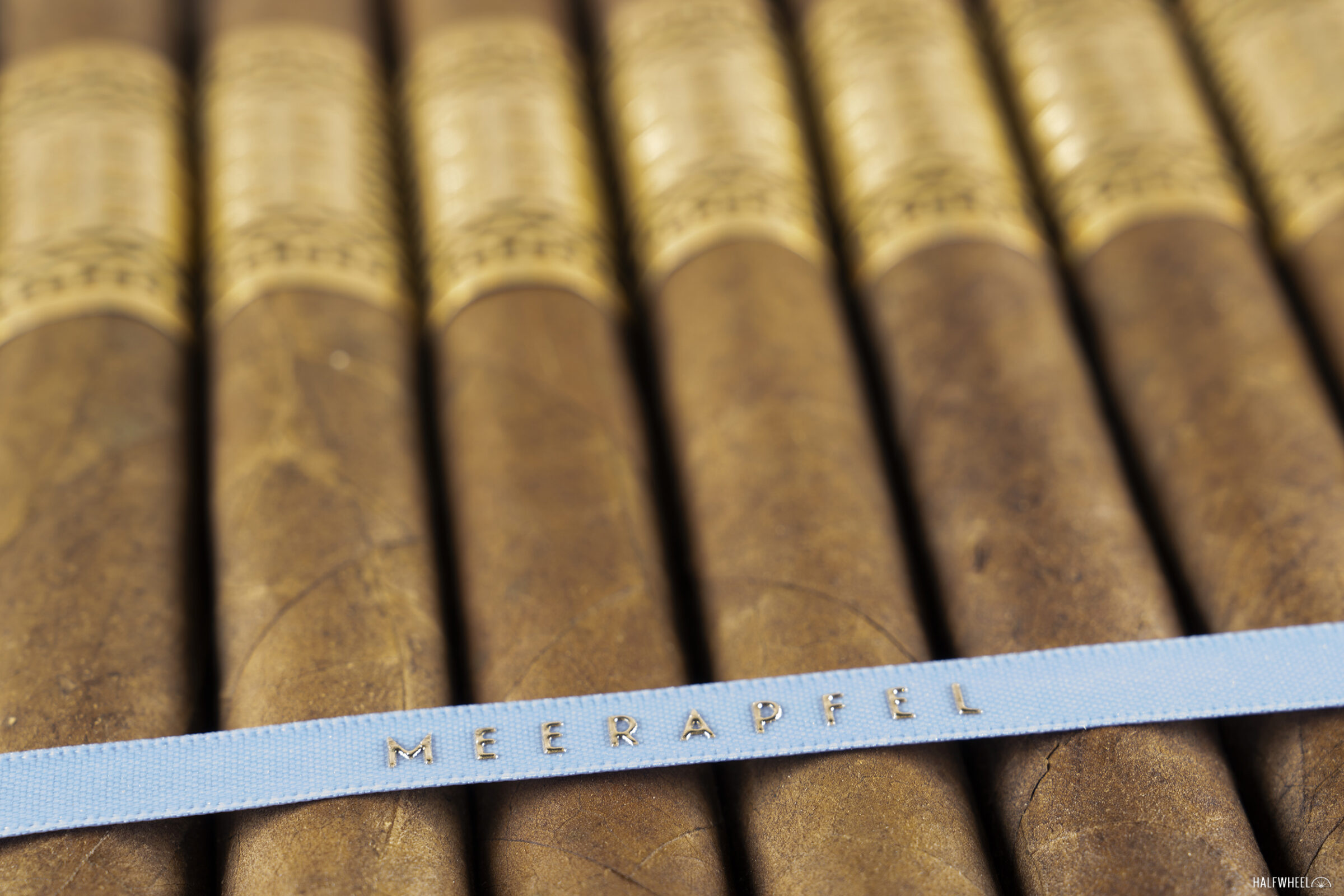
Meerapfel cigar’s packaging is unlike anything else on the market. The standard boxes—the company prefers the term chests—are configured in a unique 1 x 25 configuration, where all the cigars are packaged in one row. The flashier option is a unique 10-count box, which is the only way to get the Double Robusto size of each line. The 10-cigars are placed inside a massive porcelain ashtray. The design was named halfwheel’s Packaging of the Year for 2022.
Each of the lines has its own bands—the designs of the bands are different, though they are gold—by Van Tintelen Printing Art B.V. The level of detail in the cut-outs is simply unique to Meerapfel.

Coinciding with this release was a slight update to the interior of the 25-count boxes. Underneath the row of cigars is a false bottom that contains a Boveda pack. The design of the bottom section has been redone and now looks a lot more luxurious.
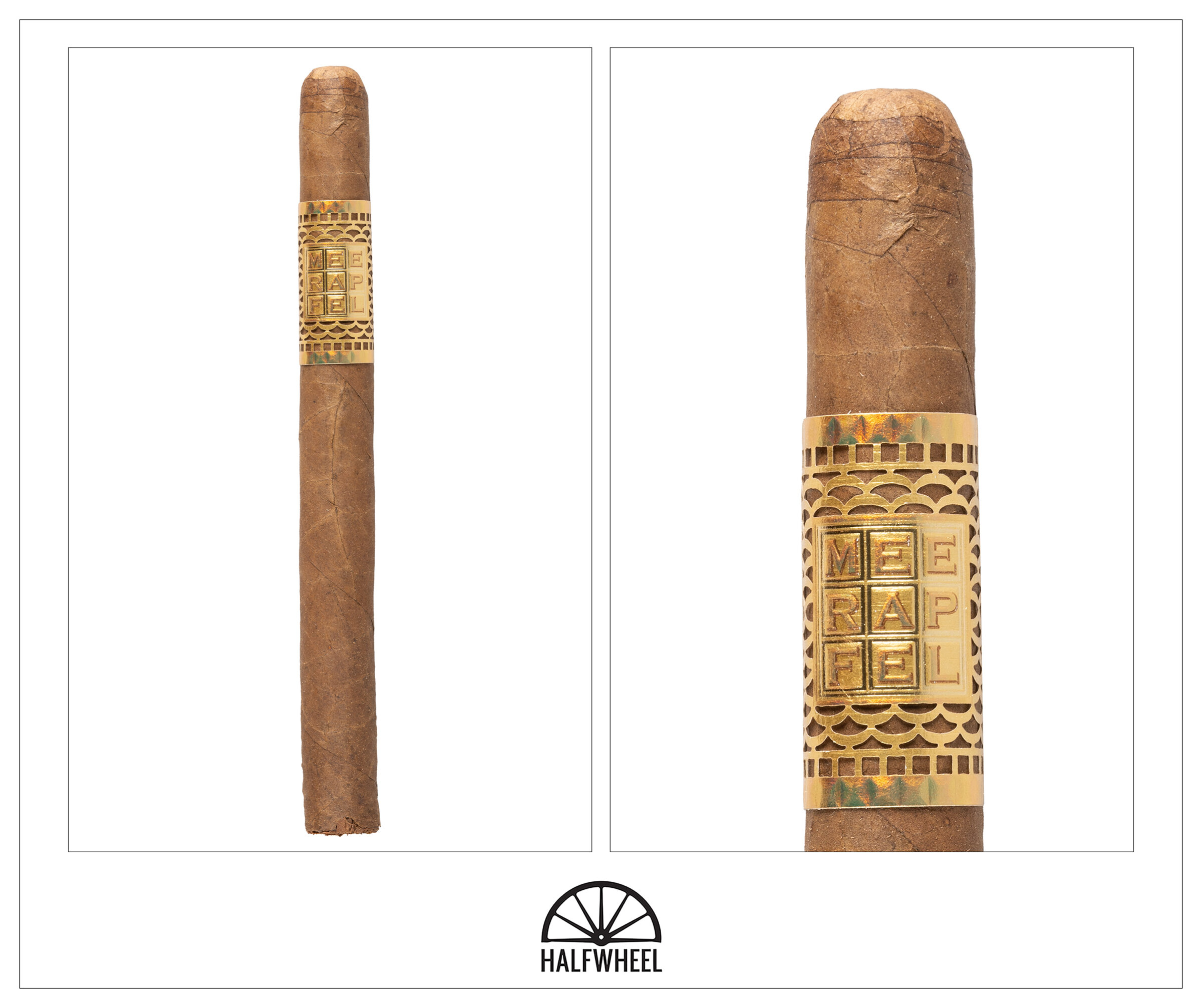
- Cigar Reviewed: Meerapfel Cigar Ernest Master Blend Lonsdale
- Country of Origin: Undisclosed
- Factory: Undisclosed
- Wrapper: Undisclosed
- Binder: Undisclosed
- Filler: Undisclosed
- Length: 6 3/4 Inches
- Ring Gauge: 43
- Vitola: Lonsdale
- MSRP: $50 (Box of 25, $1,250)
- Release Date: September 2023
- Number of Cigars Released: Regular Production
- Number of Cigars Smoked For Review: 3
Until the company’s approach to packaging changes, it’s going to be very difficult to ever pick up a Meerapfel cigar and not immediately focus on the elaborate bands. These are so much more detailed than 99 percent of the cigars I smoke and yet, not overdone. It’s a timeless design, one that makes me feel somewhat guilty just to place them alongside every other cigar band in the recycling bin. As for the appearance of the cigar, the wrapper isn’t the prettiest leaf in the world, though if this is a Cameroon wrapper, that is to be expected. There’s mottling, veins and an excessive amount of texture that take away from the absolute beauty, though for some, this is the way to go. While I’m not sure if it’s true, I’ve always joked that the uglier the Cameroon, the better it probably is. Aroma-wise, there’s not much I can detect from the wrapper. It’s a medium-plus mixture that reminds me of leather and the smell of a bag of rice, though both are quite subtle. The third cigar has a mild but distinct smell that reminds me of the smell of baby cream. The foot is medium-plus or medium-full and has a smell that reminds me of green olives. It’s not a one-to-one replica, but it’s very similar and extremely unique for a cigar. I suspect this comes from the box, which has a bit of a funkier smell than most. There’s also some oak and a perfume note in the cigar. Upon taking a cold draw, I’m less convinced that the olive-like smell is due to the box. I can taste it on all three cigars in varying amounts, though it’s always a primary flavor. Other sensations include green licorice, vibrant cedar, peanut butter, cocoa, vanilla, caramel, tangerine and, on one cigar, a very generic shellfish-like sensation. None of the cigars have more than five of these sensations, but each has the olive flavor as well as some sort of sweetness.
The Meerapfel Ernest Lonsdale begins with leather, nuttiness and woods—sometimes more cedar, other times more oak—over some of that olive flavor, an underlying sweetness that manifests itself into very different sensations—floral, caramel, sweet wine—creaminess and toastiness. Each first puff is medium-full, vibrant and devoid of any pepper. The core develops into a profile that is quite familiar: lots of nuttiness over some charred woods with an underlying sweetness as a more distinct secondary flavor. On two cigars, behind that trio are acidity and herbal flavors. The third cigar is notably different as the herbal flavors are on the same level as the main flavors, which radically changes my impression of the profile. On the finish, there’s a lot of nuttiness over creaminess, sweetness, some sharpness that mixes with woods to remind me of the aftertaste of drinking bourbon neat, and some alfalfa sprouts. While there are unique flavors, the more remarkable part is just how smooth the finish is. Retrohales are remarkably consistent with the main flavor. There’s a tiny bit more pepper, but otherwise, it’s difficult for me to find much in the way of differences. Flavor is medium-full to full, body is full and strength is medium. While some of the cold draws seemed slightly open, once the cigars are lit, the draws are in a predictable place and there’s nothing negative to speak of when it comes to construction.
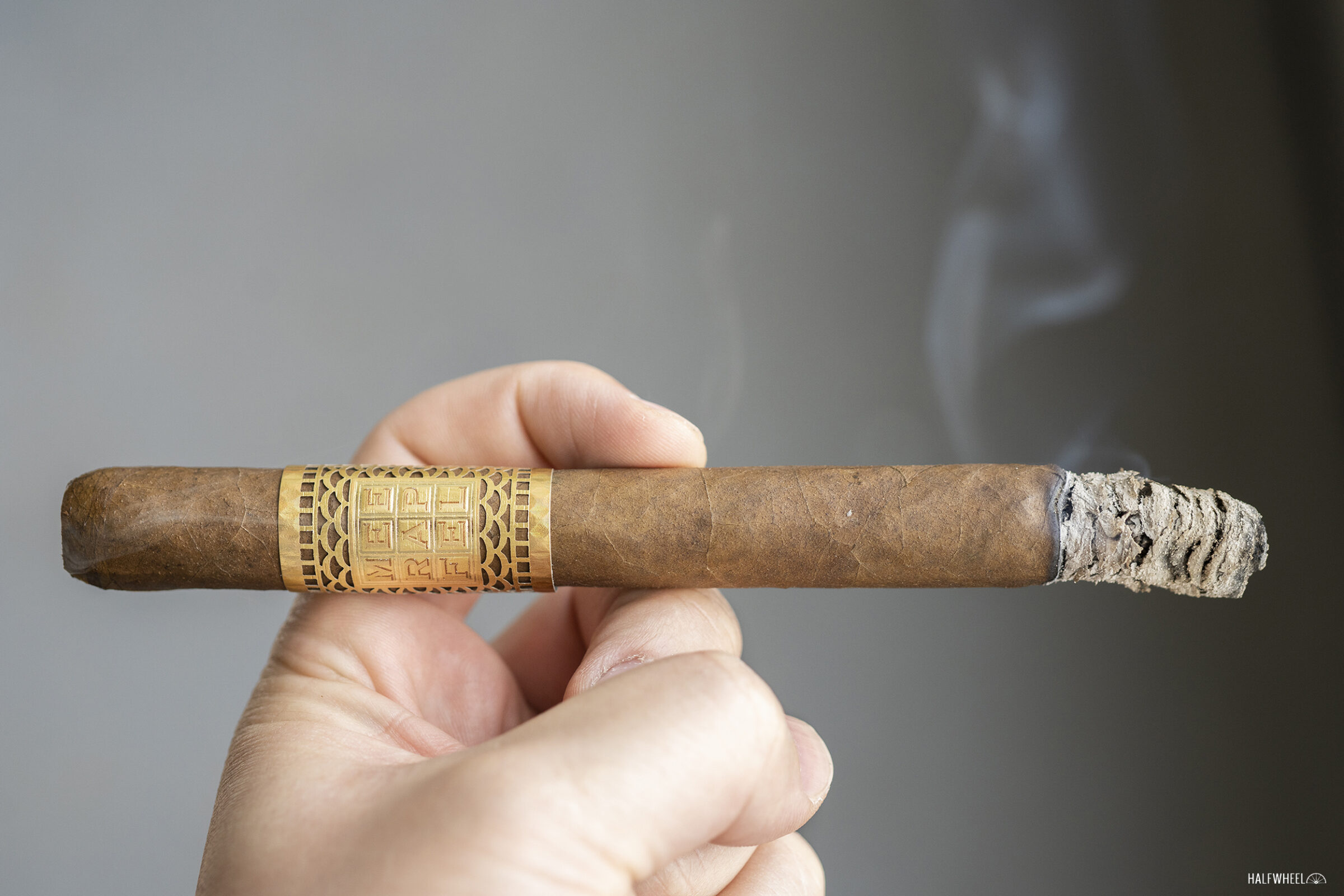
It’s difficult to pick up much of a difference between the flavor of the first third and the second third, though I notice that there’s a popcorn-like accent. Other than that, comparing notes indicates that the profile is slightly drier and sharper, but it’s not different. Around the halfway mark of each cigar, the combustion goes to zero—or near zero—and forces at least a significant touch-up, though on the first cigar, I’m caught off guard by the cigar just magically going out and requiring a full relight. After that, I notice more of a Kellogg’s cereal flavor along with a mild black pepper, though the other flavors remain the same. The finish is quite similar to the first third—though the alfalfa flavor never reemerges—and once the Kellogg’s flavor emerges, it sticks around for the finish. Retrohales have a unique nutty flavor I can’t fully identify, a sensation that reminds me of the smell of uncooked white rice, unsweet floral flavors and a minor amount of green licorice. The finish is a mixture of sweet and tart with honey, generic tartness, mild pepper and leather being the standout notes. Like the first third, the final cigar I smoke has all of that, along with a fairly robust vegetal flavor that as, at times, as strong as the nuttiness. While I don’t think the overall result is a bad cigar, I very much prefer the flavor profiles of the second and first cigars—in that order—compared to the third one. Flavor is full, body is full and strength is medium. Outside of the issues with the combustion at the midway point, I have no other construction issues, though that issue was pretty significant.
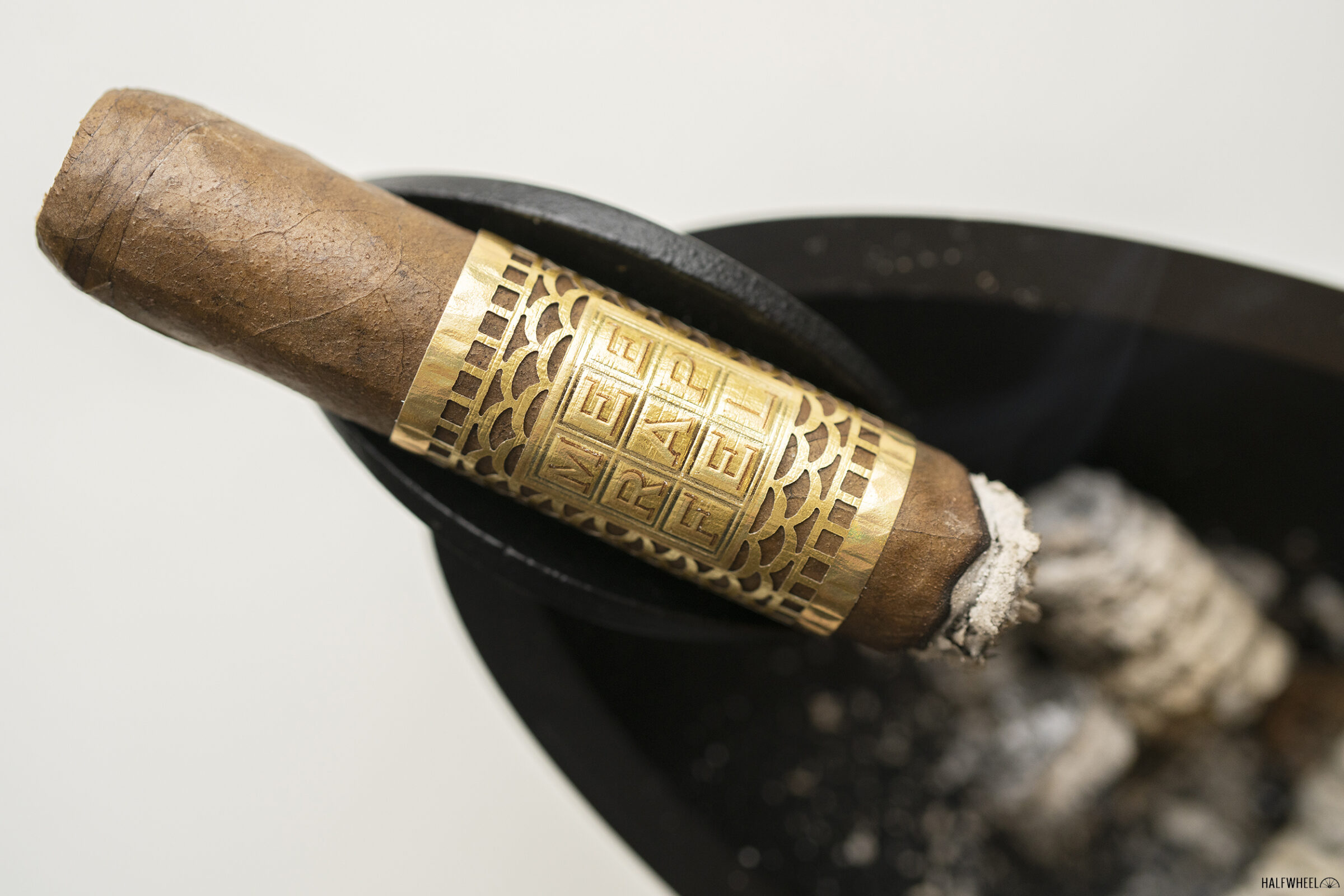
Two cigars are getting a lot harsher. It’s not surprising that the Meerapfel Ernest Lonsdale that needed the full relight tastes like a cigar that went out and had to get relit, but unfortunately, there’s so much bitter toastiness that it tastes like it’s been relit a half dozen times. This isn’t just a result of the contrast between the nuanced profile and the taste of relights, it’s off. When that’s not present, the profile continues to be nutty, though there’s some burning woods joined by a cappuccino-like coffee with a creaminess combination. Underneath there’s some grains, meatiness and white pepper. The profile is a lot more compact than the previous two thirds, which I don’t think is a positive change. The finish is similar as it tastes like I just finished a cappuccino along with woody flavors, generic tobacco and some isolated harshness. Retrohales are different with sesame seed, earthiness, popcorn and leather before finishing with some oak, creaminess and tartness. Again, the final cigar I smoke stands out as an outlier thanks to a robust vegetal flavor, though it’s reduced compared to the first two thirds. Flavor is medium-full, body is full and strength is medium-plus. Two cigars need touch-ups to help with combustion in the final third, while all three cigars have tightening draws.

Final Notes
- This will be the lowest-scoring Meerapfel Cigar review we’ve published, but that was almost bound to happen. The company had #1 and #8 on halfwheel’s Top 25 of 2023.
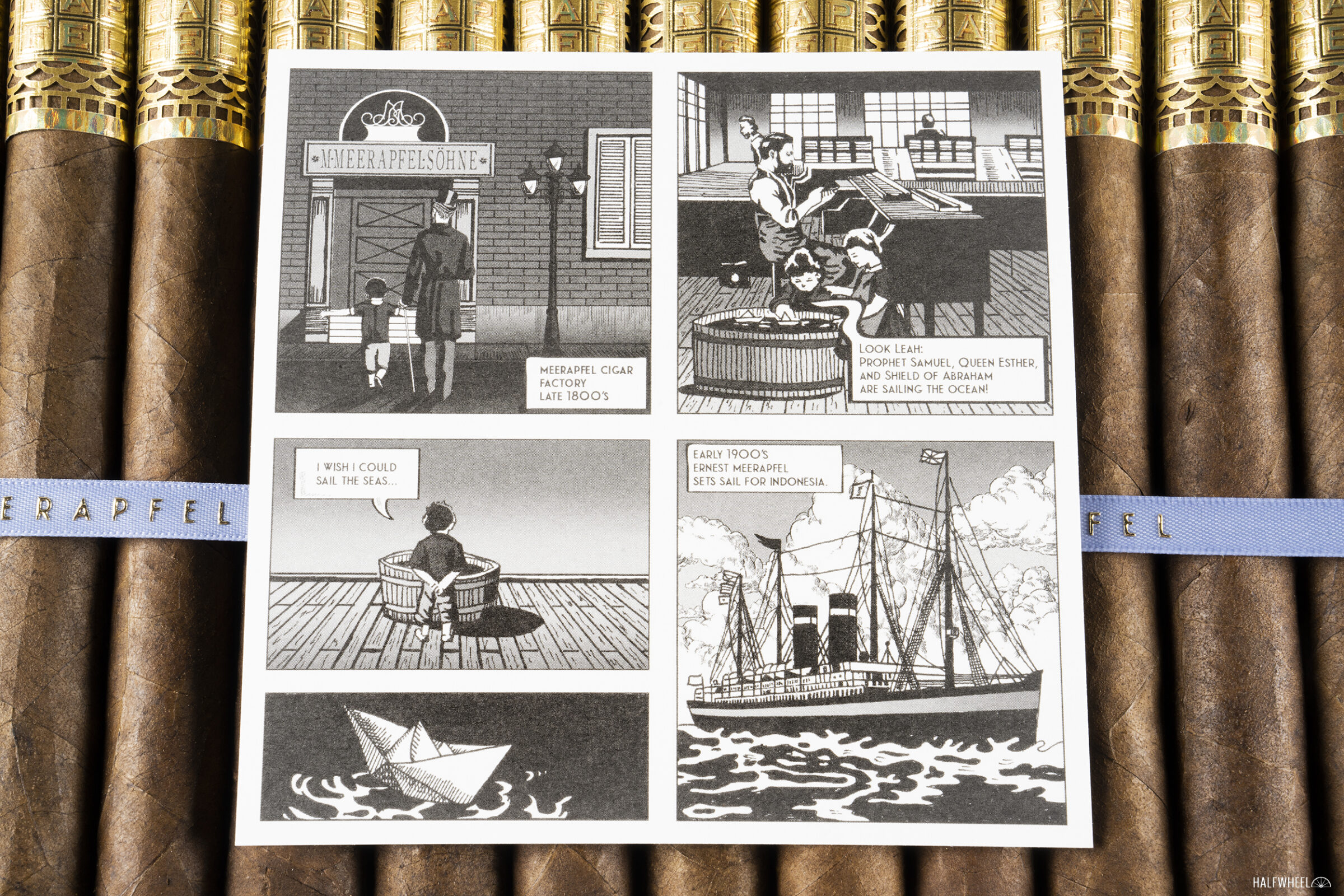
- There are a lot of great features of the Meerapfel packaging, almost too many to name. One of my favorites is the comic book feature included in each box.
- The second cigar I smoked was great, at times excellent, but the other two were not on that level. While this is far from a bad cigar, if you are only going to splurge on one Meerapfel cigar, I’d recommend the Richard Double Robusto over the Ernest Lonsdale. It’s more than 1.5x the price, but if you are already $50 on, I’d recommend spending a bit more and getting a bonafide excellent cigar. As far as more nuanced differences, I think the Richard just doesn’t have bad moments. The Richard’s profile is also crisper.
- This cigar had a lot of classic signs of Cameroon tobacco, enough that I think I would have guessed this even if I was smoking the cigars blind.

- The cigar that is 43 ring gauge has a very noticeable soft spot just below the band.
- I was surprised by how well the ash held on, especially with the first cigar when it was burning crookedly.
- Cigars for this review were purchased by halfwheel.
- Final smoking time is right around two hours and 30 minutes.
- Site sponsors Atlantic Cigar Co. and Corona Cigar Co. carry the Meerapfel Ernest Lonsdale.
89
Overall Score
The good news is that I think this cigar oftentimes tastes quite similar to—but not identical to—an Arturo Fuente Don Carlos. Even without smoking them side-by-side, there are some clear differences—I think the Don Carlos has more pepper, especially a more consistent pepper—but the highlights of the cigars are similar enough. Most of the Meerapfel-branded cigars that I’ve smoked up until this point have been better than the good Cameroon-wrapped cigars you can find in stores, but the Ernest Lonsdale is a more complicated story. One cigar was great, another was very good and the third—the one that had the stronger vegetal flavor—was slightly worse than what I’d expect from a good Cameroon-wrapped cigar like Don Carlos. There’s also no getting around how harsh the cigar finishes or the odd combustion issue near the midway point of each cigar. All of this combined means this fails to meet the insanely high bar that has been set by Meerapfel Cigar, though given how good the second cigar I smoked was, it’s possible that this cigar could meet that standard.
I am an editor and co-founder of halfwheel.com/Rueda Media, LLC. I previously co-founded and published TheCigarFeed, one of the two predecessors of halfwheel. I have written about the cigar industry for more than a decade, covering everything from product launches to regulation to M&A. In addition, I handle a lot of the behind-the-scenes stuff here at halfwheel. I enjoy playing tennis, watching boxing, falling asleep to the Le Mans 24, wearing sweatshirts year-round and eating gyros. echte liebe.













